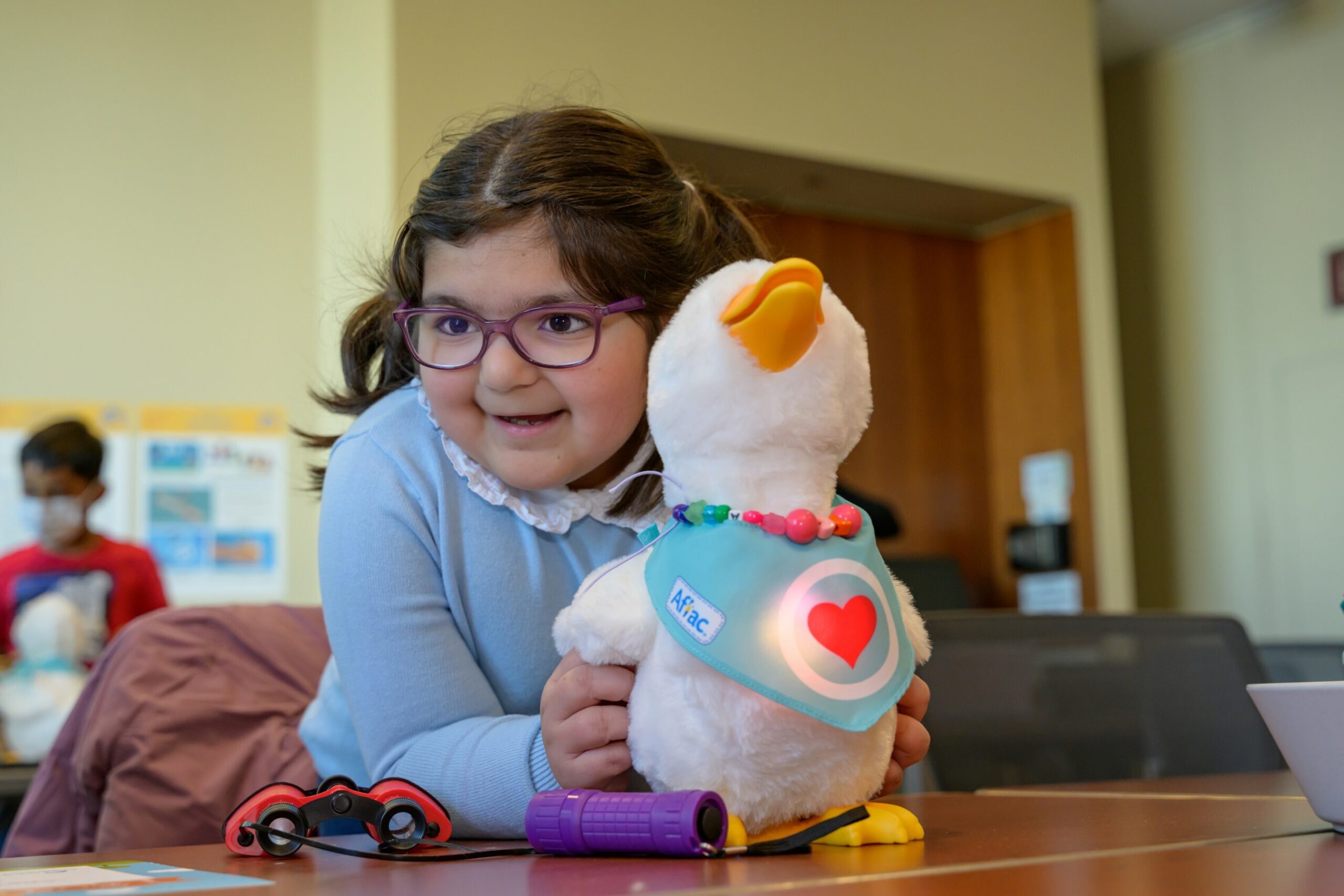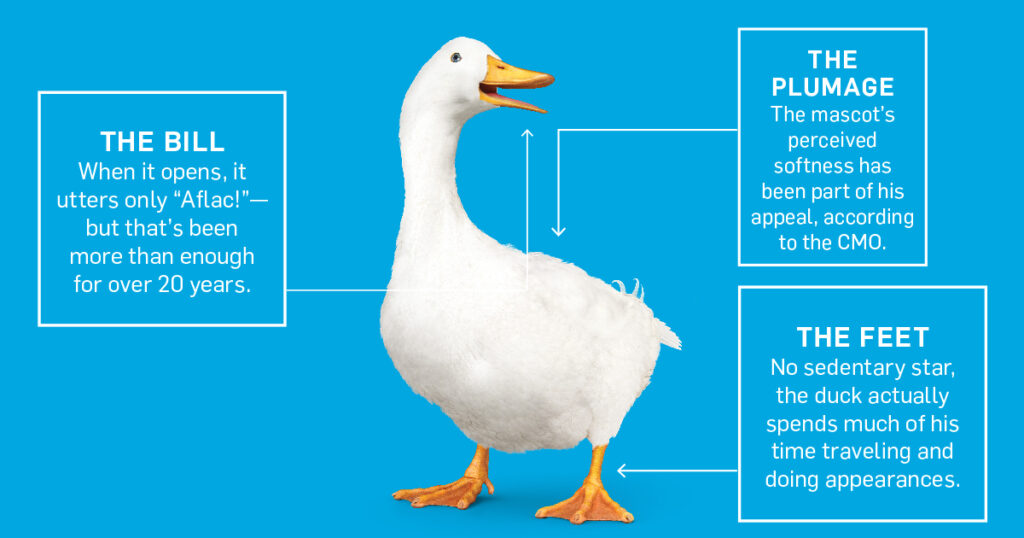I was recently asked to explain the value of earned media – as in print, TV, radio or online media coverage that is not paid for but obtained by contacting media directly – and I thought about the Aflac Duck.
The Aflac Duck is the star of a highly successful campaign that is more than 20 years old. The tall white bird with the orange beak claims to have 90% brand recognition, most of which was obtained by producing and airing more than 75 different (expensive) ad campaigns over the years. The campaign is so effective because it is super annoying, in my humble opinion. People remember it in the way they can’t get a Christmas tune out of their head for a solid day after having been in a big box store for just 15 minutes in December.
However, I just recently learned that the Aflac brand has a large charity component. My Special Aflac Duck® is plush, robotic toy that the company has delivered to thousands of children who suffer from cancer and sickle cell disease. A few months back, a study determined that the toy helps ill children express their emotions and reduces their anxiety and feelings of pain and nausea. The toy is doing what it was created to do.
Why is it, then, that after 20 years of being plagued by the quacking duck on TV commercials, I never knew that the company had invested in a toy (developed by a Brown University student) that was actually helping children in hospitals across the U.S.?
Answer: the company does not invest in the power of earned media.
Sure, when the study came out a few months ago, Aflac paid to post the results through PR Newswire, but there was no real pick up in traditional media. I assume this was because they did not put elbow grease behind trying to get the story told, ideally by offering families who would speak to the value of the duck, or nurses who would explain to media why they thought the toy was so helpful. What a missed opportunity.
When a company really wants to do the right thing, help others, and tell stories that inspire, they use earned media, which brings third party credibility. This is where Aflac missed the mark. By not sharing the stories of My Special Duck® through earned media, not only did the company lose the chance to show audiences the valuable work it is doing, which would be good for the corporate brand, it did not leverage the chance to move people into action, to care about others, and potentially support children in their own lives. Plus, positive stories about humanity and helping each other make us all feel good. And who doesn’t want the opportunity to feel good?
Lucas, the Gerber Baby of 2018 is a great example of a company using earned media correctly. The way the contest works is that parents from around the world send photos and videos of their children to Gerber with a story that explains why they think their child should be the star of the company’s ad campaign. That year, one family sent footage of their young son who had Down syndrome to the company for consideration. The selection committee fell in love with Lucas. The video was so energetic and engaging, the company execs were hooked. But, they didn’t want to select him as the winner for fear of seeming disingenuous or being criticized for exploiting a child with genetic impairment for the company’s financial benefit. After much contemplation, I was told, they came to the resolution of not paying for media to tell the story by way of advertising, but getting earned media to tell Lucas’ story instead. The campaign was a success, not only for Gerber, but for advocates who wanted to show that children with Down syndrome are enormously lovable and wonderful. Picked up by the largest media outlets everywhere, the campaign was a win-win, thanks to the power of earned media.
When explaining the real value of earned media, I don’t go immediately to machine learning online tools that measure earned media value (EMV) by digitally tracking social media sentiment, likes and follows, influencer postings and traditional print, TV and radio coverage. Sure, there are math equations that apply something similar to .50 cents per like to a formula that then comes up with a dollar figure. Any metric in a storm of clients clamoring for them is a relief. But the real value of earned media is not only in dollars. No, the value of earned media is in the credibility it brings. It’s the ability of media like newspaper articles, TV news segments, radio interviews and podcasts to tell heartfelt feature stories about the ways in which corporate investments can help everyday people in need.
Stories, like those of children who are so ill they spend holidays in hospitals, help people connect to others near and far and then (ideally) do good things like donate money or blood, or ride in a bike-a-thon or volunteer to help others. These stories aren’t nearly as effective when told through paid advertisements. The act of paying for a story to be told tarnishes its authenticity and can leave audiences feeling like they are being emotionally manipulated by big companies that want the world to know they do good, even while making a fortune by selling stuff.
While earned media is not paid for, the payoff can be invaluable for companies seeking to do good in the world.
Images from Aflac.



